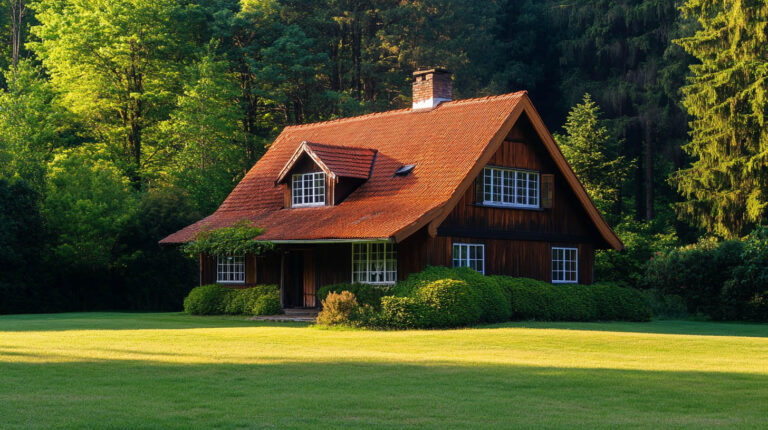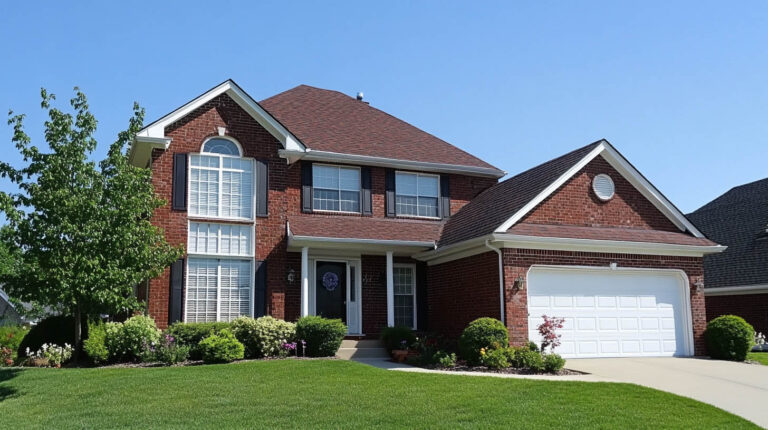
Blog
How Long Does a Roof Replacement Typically Take?
Getting a roof replacement can feel like a significant inconvenience, but it is a necessary step to ensure the safety and longevity of your home. Roofs are built to last, with some materials offering a lifespan of up to 50 years. However, when it’s time for a replacement, knowing what to expect in terms of the timeline can help ease the process. At Avenue Roofing, we specialize in efficient roof replacements that balance speed with the highest quality workmanship.

How Long Does It Take to Replace a Roof?
The duration of a roof replacement depends on various factors, including the size, complexity, and materials involved. While many homeowners worry about how long they’ll have to endure the process, the good news is that most roof replacements can be completed within one day. However, certain circumstances may extend this timeline, and it’s important not to rush the process to ensure a thorough and lasting replacement.
Unique Fact: On average, roof replacement projects take 1 to 3 days, but larger or more complex roofs can take up to a week or more.
Factors That Impact Roof Replacement Time
1. Roof Size and Complexity
The larger and more complex your roof, the longer it will take to replace. A simple roof with two to four facets will take less time than a roof with multiple levels, dormers, or intricate designs. The square footage of your roof also plays a significant role—larger roofs require more materials and labor, thus extending the timeline.
2. Accessibility
The accessibility of your home can affect how quickly a roof replacement can be completed. If your roof is very steep or high, contractors will need to take extra safety precautions, which can slow down the process. Additionally, obstacles such as bushes, trees, or fences may make it harder for the crew to set up ladders and equipment, adding more time to the project.
3. Weather Conditions
Weather is an unpredictable factor in roofing. A dry, sunny day is ideal for roof replacements, as rain or snow can significantly delay the process. In regions with frequent rain, it’s best to plan roof replacements during the dry season to avoid interruptions. Summer months with longer daylight hours may also allow contractors to work more efficiently.
4. Roof Material
The type of roofing material you choose will also impact how long your replacement takes. For instance, asphalt shingles are quick and easy to install, while metal roofing or slate tiles may require more time due to their complexity and weight.
Roof Replacement Process Overview
Here’s what to expect during a roof replacement:
- Inspection and Planning: The first step is a thorough inspection of the existing roof to identify any underlying issues, such as water damage or structural weaknesses. The contractor will also estimate the amount of time and materials needed for the replacement.
- Old Roof Removal: The old shingles or tiles are stripped off, and any damaged decking is replaced. This step is labor-intensive and may take several hours, depending on the roof’s size.
- New Roof Installation: Once the old roof is removed, the new materials are installed. This includes laying down underlayment for water protection and installing shingles or other roofing materials.
- Final Cleanup: After the new roof is installed, the team will clean up debris, nails, and any remaining materials from your yard, leaving your property tidy.
Can a Roof Be Replaced in One Day?
Yes, in many cases, a roof replacement can be completed in a single day. However, this depends on factors like the weather, roof size, and complexity. In cases where the roof has multiple levels or dormers, the replacement might take longer.
Tip: It’s always better to allow contractors the time they need to complete the job correctly rather than rushing through it to meet a tight deadline.
FAQs
1. How long does it typically take to replace a residential roof?
Most residential roof replacements take 1 to 3 days, depending on the size and complexity of the roof.
2. What time of year is best for roof replacement?
The best time for roof replacement is during the dry months, typically spring and summer, when there is less risk of rain delays.
3. Can a roof replacement be delayed due to bad weather?
Yes, weather conditions like rain, snow, or high winds can delay a roof replacement. It’s safer to wait for clear weather to ensure proper installation.
4. What can I do to speed up the roof replacement process?
Clear any obstacles like furniture, vehicles, or garden features that may block access to the roof. Also, schedule your replacement during a season with predictable, dry weather.
5. How can I prepare my home for a roof replacement?
Make sure to protect outdoor furniture and vehicles by moving them away from the house. You may also want to cover any items stored in the attic, as debris may fall during the roof removal.
Conclusion
The time it takes to replace a roof varies depending on several factors, including the roof’s size, complexity, and the weather. While many roof replacements can be completed in a day, some may take longer due to unexpected challenges or more intricate designs. At Avenue Roofing, we ensure every roof replacement is done with precision and care, no matter how long it takes. With our experienced team, you can rest assured that your new roof will be built to last, offering protection and peace of mind for years to come.
To understand hail damage and its impact on your roof, click here.



